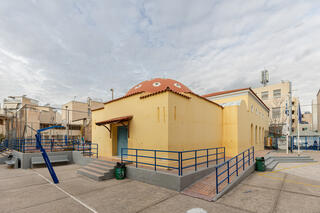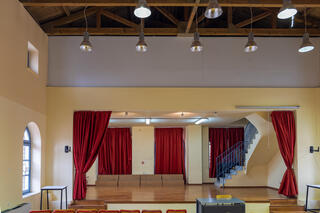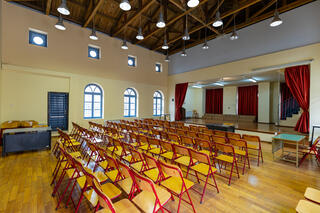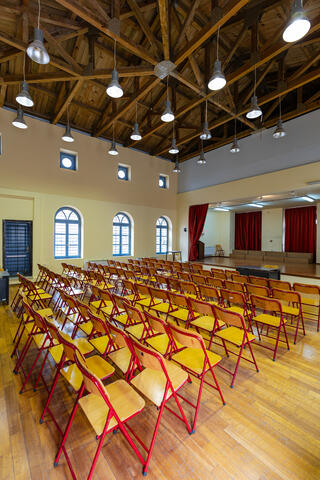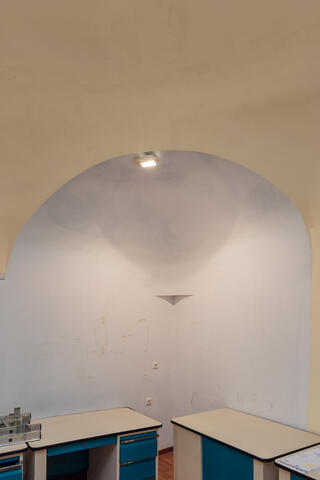HAMMAM
HAMMAM
In Kokkinia in 1923 - 1925 a bath - hammam was built by the Armenian architect Artin Palatzian for the individual cleaning of refugees. The hammam was called “Asia Minor” and was built on private land owned by Georgios Tsochas (former mayor of Athens and member of the People's Party), outside the boundaries of the organized settlement. Until the end of the 1950s, when most houses did not have a bathroom, the hamam served as the main option for the cleanliness of the citizens.
It offered two types of services: The first class included a room with two beds and a changing room. The second class did not have the luxury of the private room of the first class and charged less. In the centre of the hammam was a 2x2 marble table, on which bathers lay naked for the bathers to be rubbed by the bath attendant with a glove-tripper. Then the bathing took place, with soap in the troughs. At first the water was bought from water sprinklers and later came from a privately owned well with a pump. There was also a special area in the hammam for waxing, as it was the most effective way of avoiding the lice that plagued the refugee settlements. Waxing was done all over the body, for both men and women, using a mixture of lime and thiophos salt to burn the hair. The bath was open from 8 to 5 for women and from 5 to 9-10 in the evening for men. Children up to 5 years old were admitted with the women.
The Turkish bath was in operation until 1968. As the houses now had their own bathrooms, it slowly fell into disuse and was later rented out as a tavern. Then it was abandoned. But it withstood the earthquakes and in the 90s the building was declared a listed building. It was restored in 2003 by the School Buildings Organisation and now serves as the Multipurpose Hall of the 3rd Gymnasium of Nikaia which is located next door.
(Municipality of Nikaia, The refugee houses of Nikaia, Livani, Athens 2002, p. 124, George Veranis, published in the online group From Kokkinia to Nikaia, https://www.facebook.com/groups/1537319763157049/search/?q=%CE%A7%CE%B1%CE%BC%CE%AC%CE%BC , oral testimonies of members of the A' KAPI of Nikaia, Archontia Papadopoulou, Attica Nikaia. Historical study, 4th edition enriched, Lexypn, Athens 2023, p. 24 - 27).
VIRTUAL TOUR
3D
Monument Reconstruction
Veranis, Giorgos. Post in the online group From Kokkinia to Nikaia. Available at: https://www.facebook.com/groups/1537319763157049/search/?q=%CE%A7%CE%B1%CE%BC%CE%AC%CE%BC
Municipality of Nikaia. The Refugee Houses of Nikaia. Athens: Livanis, 2002, p. 124.
Papadopoulou, Archontia. Attic Nikaia: A Historical Study, 4th revised edition. Athens: Lexitypon, 2023, pp. 24–27.
Experimental Junior High School of Nikaia (School Year 2011–2012). Local History, Class G3 (supervising teacher: Ms. Tentoma). Available at: https://docs.google.com/document/d/1fo4HCKXQL8mVyrCcUCaES6zhYflLRUGjj5wdwL2rbHM/edit?tab=t.0
Oral testimonies from members of the 1st Open Care Center for the Elderly (KAPI) of Nikaia. Interviews conducted by Kyriaki Papathanassopoulou.
Text editing by Kyriaki Papathanassopoulou.

